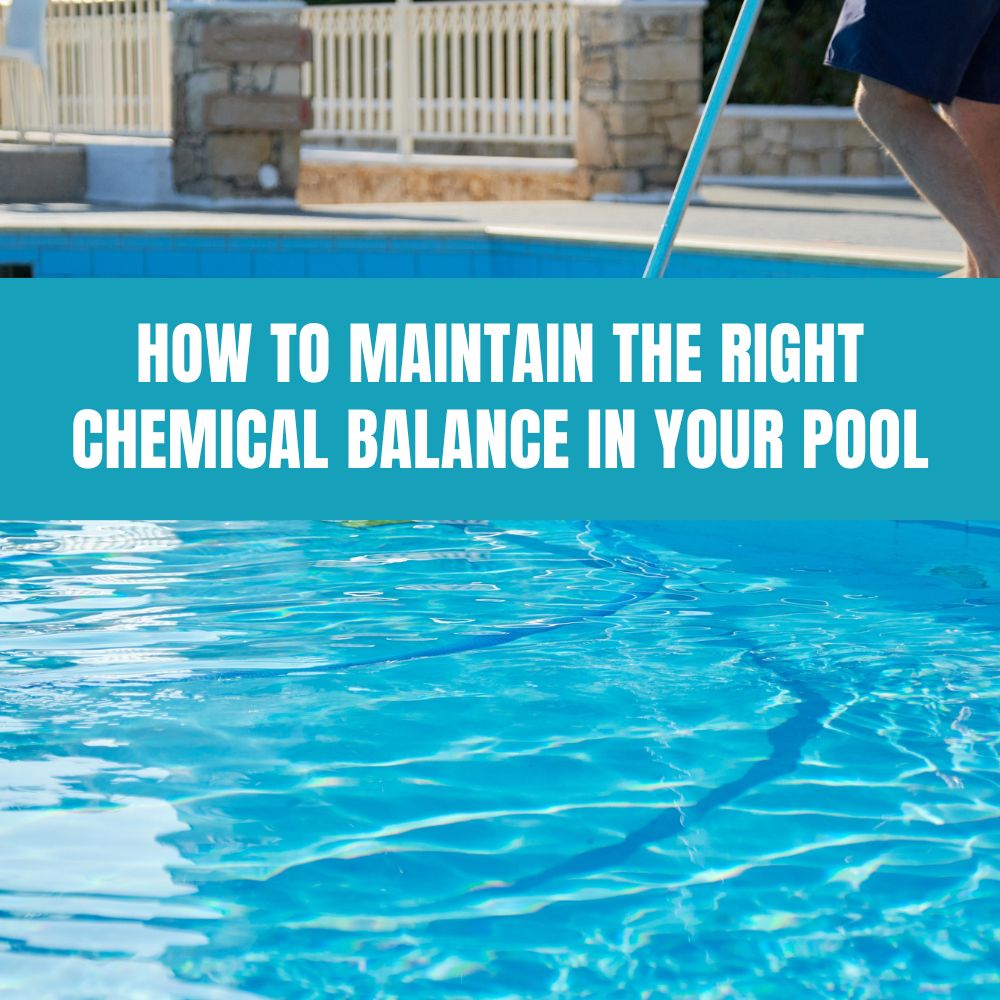Maintaining the right pool chemical balance in your pool is essential for ensuring safe, clean, and comfortable swimming conditions. Proper chemical balance prevents algae growth, protects pool equipment, and keeps the water clear and inviting. This guide will walk you through the steps needed to maintain the right pool chemical balance in your pool.
Understanding Pool Chemicals
To maintain the right chemical balance, it’s important to understand the primary pool chemicals and their functions:
- Chlorine: Disinfects and sanitizes pool water by killing bacteria and algae.
- pH Adjusters: Sodium carbonate (pH increaser) and sodium bisulfate (pH decreaser) maintain the proper pH balance.
- Alkalinity Increaser: Sodium bicarbonate helps stabilize pH levels.
- Calcium Hardness Increaser: Prevents corrosion of pool surfaces and equipment.
- Cyanuric Acid (Stabilizer): Protects chlorine from being broken down by sunlight.
- Algaecides: Prevent and treat algae growth.
- Shock Treatments: High-dose chlorine used to quickly raise chlorine levels and eliminate contaminants.
Steps to Maintain Chemical Balance
-
Test Your Water Regularly
Use a pool water test kit to check the chemical levels at least twice a week. Key parameters to test include chlorine, pH, alkalinity, calcium hardness, and cyanuric acid levels. Regular testing helps you identify imbalances early and make necessary adjustments.
-
Maintain Proper Chlorine Levels
- Daily Maintenance: Maintain a free chlorine level between 1-3 ppm (parts per million) to ensure effective sanitization. Use chlorine tablets, liquid chlorine, or granular chlorine as needed.
- Shock Treatments: Shock your pool weekly or after heavy usage, rainstorms, or when you notice cloudy water or algae growth. Follow the product instructions for the correct dosage.
-
Balance the pH Levels
- Ideal Range: Keep the pH level between 7.2 and 7.6. A balanced pH ensures effective chlorine activity and prevents skin and eye irritation.
- Adjusting pH: If the pH is below 7.2, add a pH increaser (sodium carbonate). If the pH is above 7.6, add a pH decreaser (sodium bisulfate). Always follow the product instructions for proper dosing.
-
Stabilize Total Alkalinity
- Ideal Range: Maintain total alkalinity between 80-120 ppm. Alkalinity acts as a buffer for pH, helping to prevent fluctuations.
- Adjusting Alkalinity: If the alkalinity is low, add an alkalinity increaser (sodium bicarbonate). If the alkalinity is high, partially drain and refill your pool with fresh water.
-
Control Calcium Hardness
- Ideal Range: Maintain calcium hardness levels between 200-400 ppm. Proper calcium levels prevent corrosion of pool surfaces and equipment.
- Adjusting Calcium: If calcium hardness is low, add a calcium hardness increaser. If it is too high, partially drain and refill the pool with fresh water.
-
Use Cyanuric Acid (Stabilizer) Properly
- Ideal Range: Keep cyanuric acid levels between 30-50 ppm to protect chlorine from being broken down by sunlight.
- Adding Stabilizer: If levels are low, add cyanuric acid according to the product instructions. If levels are too high, partially drain and refill the pool with fresh water.
-
Prevent and Treat Algae
- Algaecides: Use algaecides weekly to prevent algae growth. Follow the product instructions for proper dosing.
- Brushing and Vacuuming: Regularly brush and vacuum your pool to remove algae spores and debris that can contribute to algae growth.
-
Monitor and Adjust
Regularly monitor your pool's chemical levels and adjust as needed. Weather changes, pool usage, and other factors can affect chemical levels, so it's essential to stay vigilant.
Tips for Safe Chemical Handling
-
Read Labels and Follow Instructions
Always read the labels on pool chemical containers and follow the manufacturer’s instructions for proper dosing and handling.
-
Use Protective Gear
Wear protective gear such as gloves, goggles, and long sleeves when handling pool chemicals to protect your skin and eyes.
-
Store Chemicals Properly
Store pool chemicals in a cool, dry place away from direct sunlight and moisture. Keep chemicals in their original containers with labels intact and out of reach of children and pets.
-
Avoid Mixing Chemicals
Never mix different pool chemicals together, as this can cause dangerous reactions, including explosions or the release of toxic gases.
Final Thoughts
Maintaining the right pool chemical balance in your pool is crucial for ensuring a safe, clean, and enjoyable swimming environment. By regularly testing your pool water, adjusting chemical levels as needed, and following safe chemical handling practices, you can keep your pool in top condition all season long. With the right approach, pool maintenance can be straightforward and effective, allowing you to enjoy your pool without worry.

